Introduction: Finding Your Paddle Power—A Personal Journey to SUP Paddle
When I first stepped onto a paddle board, I thought my background in high-level kayaking would give me an edge.
After all, I knew my way around a paddle, and I wasn’t a stranger to water sports.
But here’s the honest truth: my first few attempts at paddle boarding were, well, a bit humbling for a paddler.
Staying straight and balanced on that board was more challenging than I expected, especially when trying to use the paddle effectively.
I found myself wobbling, drifting off course, and, to my embarrassment, going in more zig-zags than straight lines.
It was a far cry from the control I was used to in a kayak, where every stroke felt powerful and precise, unlike my paddle strokes on the board.
I know I’m not alone in this.
According to a recent survey, nearly 60% of paddle boarders report struggling with balance and direction when they’re first starting out.
It’s normal to feel a bit blocked or frustrated, especially if you’re used to other water sports.
But here’s the good news—like anything else, paddle boarding becomes easier and more enjoyable with practice and the right techniques.
I’m excited to share that over time, I found the moves that gave me more freedom on the water.
The secret sauce for me was actually borrowing a technique from my canoeing days.
There’s a specific move I learned in canoeing that’s been a game-changer for my paddle boarding.
It helps me navigate straight without constantly switching sides or feeling like I’m battling the board.
It’s allowed me to feel more in control and less like I’m just along for the ride.
In this article, I’m going to share everything I’ve learned about holding and using your paddle board paddle—whether you’re a complete beginner or looking to refine your technique.
We’ll cover the basics, avoid common mistakes, and dive into some advanced moves, including my trusty canoeing technique that’s helped me master the board.
So, if you’ve been feeling a bit wobbly or unsure out there, stick with me.
By the end of this guide, you’ll be paddling with confidence, control, and a big smile on your face. and you’ll know how to hold a paddle board paddle like a pro.
And if you’re ready to take your paddle boarding experience even further, don’t miss our guide on adjustable paddle shafts. Discover The Best SUP Paddles of 2024 | Expert Advice & Reviews.
The right paddle can make all the difference, and this guide will help you find the perfect one to match your style and needs.
The Basics of Holding a Stand Up Paddle Board Paddle
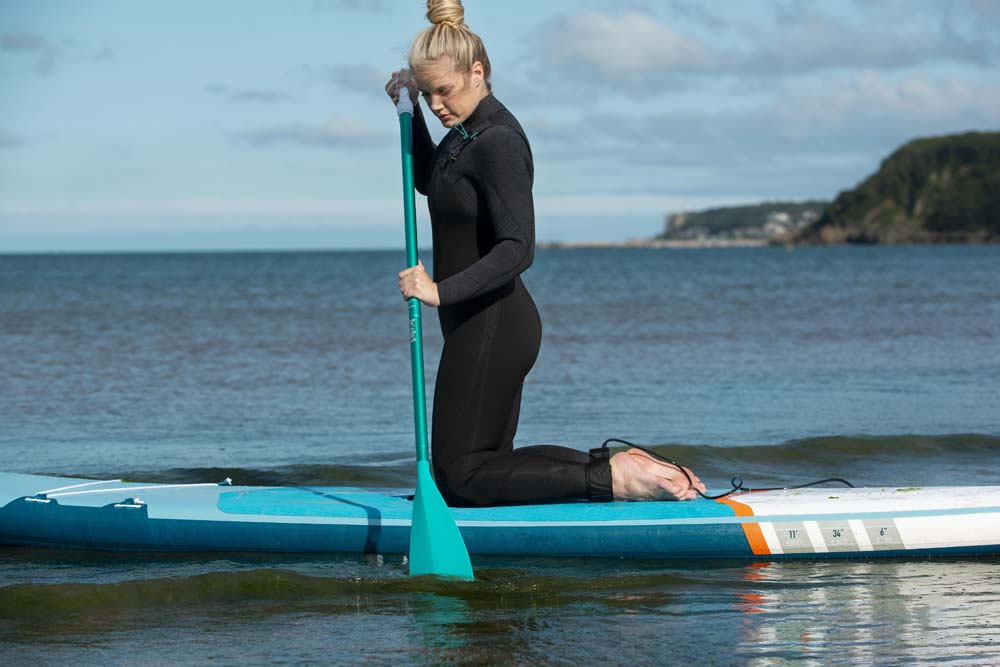
When you first step onto a paddle board, the paddle might feel a bit foreign, especially if you’re holding the paddle incorrectly.
But don’t worry, we’ve all been there—gripping it like it’s a baseball bat or something while trying to paddle correctly!
The key to holding your paddle board paddle is actually simpler than you think.
First, make sure the paddle is the right way up—yes, the blade has a correct side.
The angle of the paddle blade should be facing away from you, not toward you.
This might seem counterintuitive, but it helps you slice through the water smoothly.
Hold the top of the paddle with one hand and the shaft with the other.
If you’re paddling on the right side, your left hand should be on the top grip.
And if you’re paddling on the left side, switch it up so your right hand is on top.
Now, let’s talk about the hand placement.
Keep your hands about shoulder-width apart.
A quick tip to remember this: if your arms look like you’re raising the roof, you’ve got it right!
Why shoulder-width?
Because this gives you better control and power, making your strokes more efficient.
And trust me, your shoulders will thank you after a long day on the water, especially if you learn to leverage your strokes correctly.
If you’re gripping too close together, you’ll lose power and might end up going in circles—no one wants that!
So, remember: wide grip, angled blade, and keep it relaxed.
This isn’t a death grip; it’s more like a firm handshake.
Think of it like holding a cup of coffee—you want control, but you don’t want to crush it.
And if you need a break, just take a moment to float and enjoy the view.
Paddle boarding is as much about the experience as it is about the technique.
By starting with these basics, you’ll be on your way to paddling with confidence and ease.
How to Hold a Paddle : Common Mistakes and How to Avoid Them
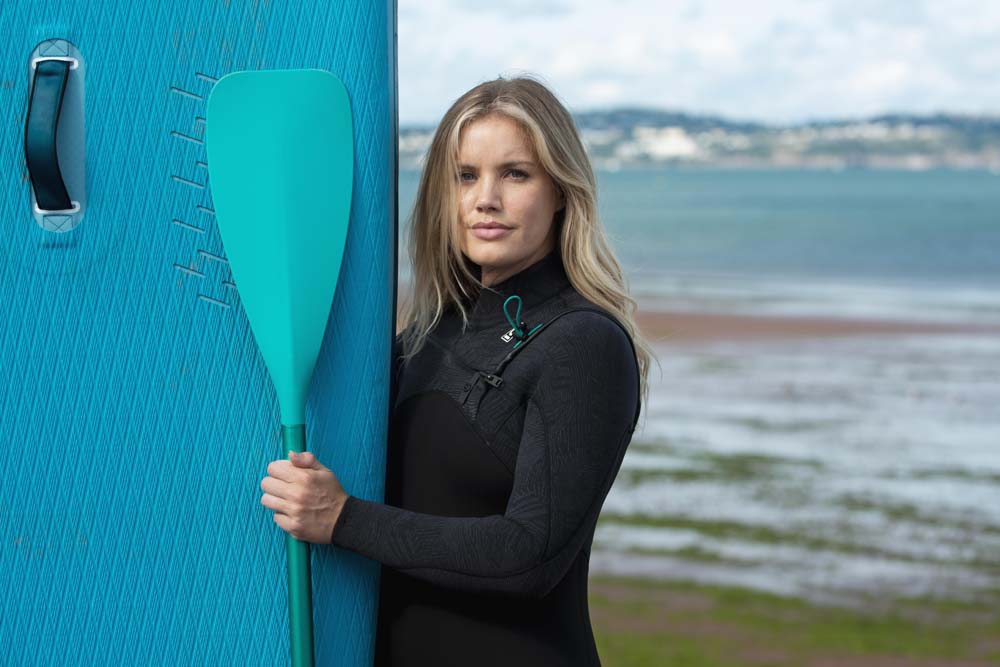
Even seasoned paddle boarders make mistakes, so don’t stress if you’re still figuring it out; every paddler has been there.
One common mistake is gripping the paddle too tightly.
Remember, it’s not a sword fight, so ease up on that grip!
A tight grip will tire out your hands and arms faster than you can say “paddle on.”
Another mistake is holding the paddle upside down.
Yes, it happens more often than you’d think!
The angle of the blade is designed to cut through the water efficiently.
Holding it the wrong way will have you working twice as hard for half the results.
Trust me, I’ve been there, paddling in circles and wondering why I wasn’t going anywhere.
Also, keep an eye on your hand placement.
If your hands are too close together, you lose control and power.
Think of it like trying to row a boat with a toothpick—it’s just not going to work!
It’s also important to switch sides when you paddle.
Some beginners stick to one side because it feels more natural.
But this can lead to muscle imbalance and, let’s face it, a very lopsided trip.
Alternate sides every few strokes to keep your movement balanced and efficient, ensuring you submerge the paddle fully.
And if you ever feel like you’re not making progress, take a break.
Look around, enjoy the scenery, and then adjust your technique.
Sometimes, a quick pause is all you need to figure out what’s going wrong.
Lastly, don’t forget to engage your core.
Paddle boarding is a full-body workout, not just an arm exercise.
Use your core muscles to help propel yourself forward.
Not only will this make your paddling more effective, but it’ll also save your arms from burning out too quickly.
By being aware of these common mistakes, you can avoid them and enjoy a smoother, more enjoyable paddle boarding experience.
Advanced Techniques to Elevate Your Paddling Game and Paddle Faster
Once you’ve mastered the basics, it’s time to take your paddling to the next level with vertical strokes.
Ready to impress your friends on the water? Let’s dive into some advanced techniques!
First up is the J-stroke.
This move is a game-changer for keeping your board moving straight without constantly switching sides.
Start with a regular forward stroke, then at the end of the stroke, curve the paddle away from the board in a “J” shape.
It’s like adding a little flick at the end—just enough to correct your course.
It might take a few tries to get it right, but once you do, you’ll feel like a pro.
Next, let’s talk about the cross-bow stroke.
This one’s for those tight turns when you need to change direction quickly.
Instead of switching your paddle to the other side, reach across the front of your board and pull the shaft of the paddle towards you.
Think of it as a sneaky shortcut—no paddle switching needed!
You’ll be zigzagging around obstacles like a slalom skier in no time.
Now, for a move that looks as cool as it feels: the pivot turn.
Step back on your board to lift the nose out of the water, then sweep the paddle in a wide arc on one side.
The board will spin around like it’s on a dime, making you look like a paddle boarding ninja.
Fair warning—this one takes practice and balance, but it’s worth the effort.
Finally, don’t forget to experiment with your paddling speed and rhythm.
Try speeding up your strokes in quick bursts to glide over choppy water or slow down to enjoy a smooth, steady ride, ensuring your paddle is perpendicular to the water.
Paddle boarding isn’t just about moving from point A to point B.
It’s about finding your flow as a stand up paddle boarder and making the most out of every stroke.
By adding these advanced techniques to your repertoire, you’ll not only paddle more efficiently but also have a lot more fun out on the water with your adjustable paddle.
So go ahead, give them a try and watch your paddling game reach new heights.
Tips for Staying Comfortable and Safe While Paddling
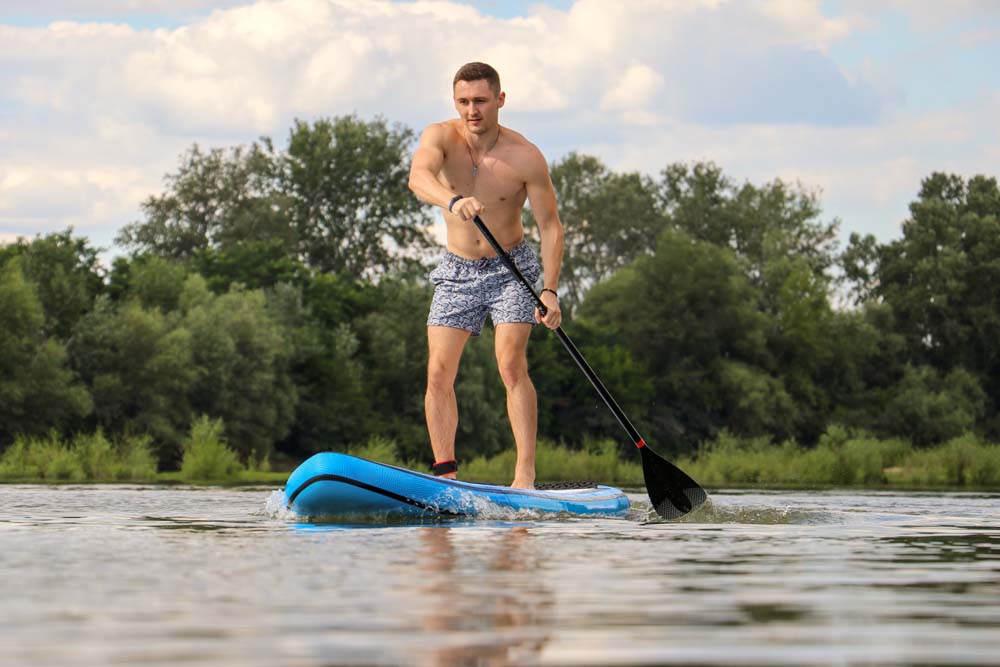
Now that you’ve got the techniques down, let’s talk about staying comfortable and safe on the water.
First things first: always wear a life jacket.
It might not be the most stylish accessory, but it’s a must-have.
Even if you’re a strong swimmer, the life jacket is there to keep you safe if you fall off your board while trying to paddle into the water.
Plus, many places require it by law, so better safe (and legal) than sorry!
So stay Safe, Paddle Strong! Discover the Best Life Jackets for Paddle Boarding to Keep You Comfortable and Secure on Every Adventure. Click Here to Find Your Perfect Fit!
Speaking of safety, don’t forget to attach a leash to your board.
A leash is crucial because it keeps your board close, even if you take an unexpected dip, so you’ll know where it is.
Without a leash, your board can quickly drift away, especially in strong currents or windy conditions.
Trust me, swimming after a runaway board is not the kind of workout you want!
Keep Your Board Close and Your Confidence High! If you still don’t have a leash for your board, check Out Our Ultimate Guide to the Best Paddle Board Leashes and Find the Perfect Match for You
Next, let’s talk about sun protection.
Being out on the water means you’re exposed to the sun’s rays more than you realize.
Slather on that sunscreen, wear a wide-brimmed hat, and don’t forget your sunglasses.
Your future, less-sunburned self will thank you.
Hydration is key, too.
Bring along a water bottle and take sips regularly.
It’s easy to get dehydrated when you’re out having fun, so keep that water handy.
Now, about staying comfortable—footwear can make a big difference.
Some paddle boarders go barefoot, which is great for balance, but others prefer water shoes for a bit more grip and protection.
Try both and see what works best for you.
If you’re out in cooler weather, consider wearing a wetsuit or rash guard to keep warm.
Hypothermia can sneak up on you, especially if you take a spill into chilly water.
When it comes to safety, always check the weather before heading out.
Avoid paddling in strong winds, as it can make controlling your board tricky, and nobody wants to end up paddling back against the wind—trust me, it’s no fun.
Lastly, always tell someone your paddling plan.
Let a friend or family member know where you’re going and when you expect to be back.
It’s a simple step, but it can make all the difference in an emergency.
By following these tips, you’ll stay safe and comfortable, making your paddle boarding adventures even more enjoyable.
Remember, the goal is to have fun and keep paddling, so take care of yourself out there!
How to Build Your Confidence on the Water
Paddle boarding can feel a bit wobbly at first, but with a little practice, you’ll be gliding across the water with ease.
The best way to build confidence is to start in calm, shallow water.
This way, if you do fall, you can easily stand up and try again without the added pressure of deep water.
Practice getting on and off your board.
It might seem simple, but knowing how to hop on and off smoothly can make a big difference in how secure you feel.
Next, focus on your stance.
Keep your feet shoulder-width apart and bend your knees slightly.
This lowers your center of gravity and helps you stay balanced.
If you feel unsteady, remember to engage your core.
Your core muscles are your best friends when it comes to staying upright on your board.
Another great tip is to look at the horizon instead of down at your feet.
Looking down can throw off your balance, so keep your eyes forward and your head up.
It also helps to paddle with a buddy.
Not only is it more fun, but having someone there to encourage you (and maybe laugh with you) makes a world of difference.
If you’re nervous about falling, remind yourself that it’s all part of the learning process.
Even the pros take a tumble now and then!
And the more you practice, the less you’ll fall.
Take it slow, and don’t rush the learning process.
Start with short, easy paddles and gradually work your way up to longer sessions and more challenging surf conditions.
Celebrate small victories along the way—whether it’s paddling in a straight line for the first time or mastering a new technique.
Confidence comes with experience, so the more time you spend on the water, the more natural it will feel.
And before you know it, you’ll be paddling like you’ve been doing it for years!
What to Do If You Fall Off Your Paddle Board
Falling off your paddle board is part of the adventure, so don’t sweat it!
The key is knowing how to get back on quickly and safely.
First, stay calm.
Panicking will only make it harder to get back on your board.
Remember, your board is designed to float, so use it as a support.
If you’re wearing a leash (which you definitely should be), your board will be right there with you.
Swim towards your board and grab the center handle.
Position yourself alongside the board, rather than at the end, to help control the nose of your board effectively with the right blade angle.
Trying to climb on from the back or front can make the board tip.
Kick your legs to give yourself a boost, then rotate your torso and pull your chest onto the board.
Once you’re on, slide your knees onto the board and regain your balance.
From there, you can slowly stand up, keeping your knees bent and your core engaged.
If you’re having trouble getting back on, try the “knee method”.
Instead of pulling yourself up in one go, get onto your knees first, then push up to your feet.
It’s a little easier and gives you more stability.
Remember, everyone falls off, even the pros.
It’s just part of the learning process, and each time you get back on, you’re building your skills and confidence in your hand position and body and paddle coordination.
If you find yourself falling often, take a moment to assess what might be going wrong.
Are you leaning too far to one side?
Are your feet too close together?
Making small adjustments can help you stay balanced.
And if you fall near a dock or shallow area, take a break, laugh it off, and give it another try.
With practice, falling off will become less frequent, and getting back on will be second nature.
And hey, sometimes a quick dip in the water is just what you need to cool off!
Turning Your Paddle Board Adventure into a Full-Blown Experience
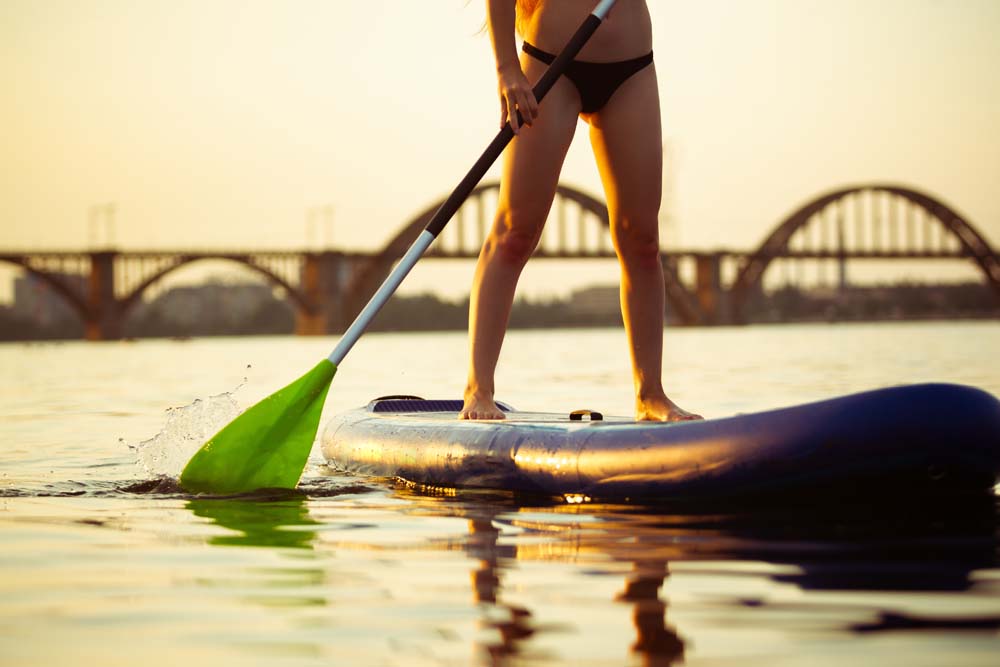
Paddle boarding isn’t just about the paddling—it’s about enjoying the whole experience of being on the water with your 3-piece adjustable sup paddle.
One way to make your time on the water more enjoyable is to explore new locations.
Different spots offer different challenges and scenery, so don’t be afraid to mix it up.
Start by exploring local lakes, rivers, or coastlines.
Each environment has its own vibe, and discovering new places keeps the adventure fresh.
Consider planning a paddle boarding trip with friends.
There’s nothing like paddling alongside your crew, sharing laughs, and maybe even a few friendly races.
Plus, group outings are a great way to learn from each other and try out new techniques.
Don’t forget to bring along some snacks and drinks.
Paddle boarding can be a workout, and there’s nothing better than taking a break to enjoy a snack while floating on the water.
Pack a small cooler with your favorite goodies, and turn your paddle session into a floating picnic.
And if you want to take that floating picnic to the next level, be sure to check out our guide on The Paddle Board Accessories and SUP Gear That Will Change Your Stand Up Paddle Experience.
It’s full of ideas for gear that can elevate your time on the water, from coolers to waterproof speakers and beyond!
If you’re into photography, bring a waterproof camera or a phone in a waterproof case.
You’ll want to capture those stunning sunrise paddles or the sight of wildlife cruising by.
Paddle boarding is about creating memories as much as it is about the sport itself.
Another way to enhance your experience is by listening to music or podcasts.
A waterproof speaker or headphones can add a soundtrack to your adventure.
Whether it’s your favorite tunes or an inspiring podcast, it’s a great way to relax and enjoy the ride.
You can also try adding some yoga or meditation to your paddle boarding routine.
The peaceful setting of being on the water is perfect for a quick stretch or a moment of mindfulness.
It’s a great way to connect with nature and recharge your mind and body.
Ready to Find Your Zen on the Water? Dive into Our Guide on Paddle Board Yoga and Discover Why SUP Yoga Might Just Be Your New Favorite Workout!
Finally, don’t be afraid to try new challenges, like paddling in different weather conditions or at night with proper lighting.
These experiences can push your limits and offer a new perspective on paddle boarding.
Whether you’re seeking relaxation or adventure, the key is to enjoy every moment on the water.
With the right mindset, paddle boarding can be more than just a sport—it can be a way to connect with nature, yourself, and others.
If you’re feeling inspired and ready to take your paddle boarding to the next level, check out our article on How to Choose a Stand Up Paddle Board.
Whether you’re a beginner or looking to upgrade, it’s packed with tips to help you find the perfect board for your adventures.
Conclusion: Mastering the Secret Sauce—The “Swan’s Neck” Technique
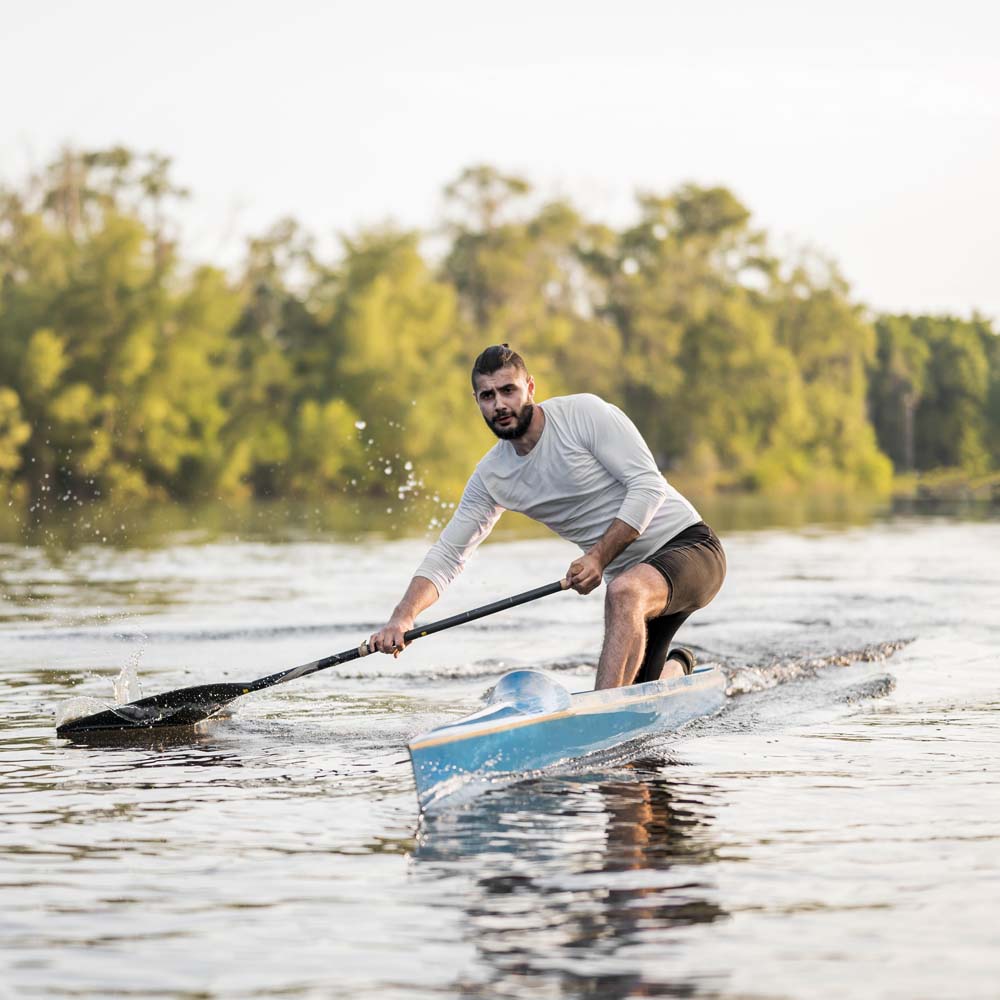
As I’ve mentioned earlier, the secret sauce for me was actually borrowing a technique from my canoeing days.
This technique is called the “col de cygne” in French, which translates to the “swan’s neck” in English.
It’s a technique that expert canoers use to navigate straight, even without a rudder.
And now, I’m going to share how you can master this move on your paddle board.
Imagine a swan gracefully gliding across the water, its neck curving smoothly as it goes.
That’s the image you want to keep in mind with this technique.
Here’s how it works, in a way that’s simple enough for a kid to understand:
When you paddle on one side, instead of just pulling the paddle straight back, you add a little curve at the end of your stroke.
It’s like drawing a gentle “J” in the water.
Start by paddling normally, with the paddle blade fully submerged, and remember to hold your sup paddle correctly.
As you finish your stroke, instead of lifting the paddle straight out of the water, curve it slightly away from your board.
This curve, or “swan’s neck,” helps to counteract the natural tendency of the board to turn toward the paddle.
By making this small adjustment, you keep your board moving straight, even though you’re only paddling on one side.
It’s a subtle move, but incredibly effective.
Elevate your paddleboarding game! Discover the best SUP paddles of 2024 with expert advice and find your perfect match for every adventure.
Once you get the hang of it, you’ll find yourself paddling in a straight line with much less effort, just like an expert canoer.
So next time you’re out on the water, give the “swan’s neck” a try.
With a little practice, you’ll be gliding smoothly and confidently, no zig-zags, just a perfect straight line.
And remember, mastering your paddle technique is just the beginning.
Paddle boarding is all about finding your rhythm, enjoying the journey, and exploring the water with confidence.
After reading this piece of content (that I really hope you like), if you still have some doubts before going paddling, find Out How Easy It Can Be with Our Tips for Beginners of All Ages. Start Your Paddle Adventure Today!


0 Comments